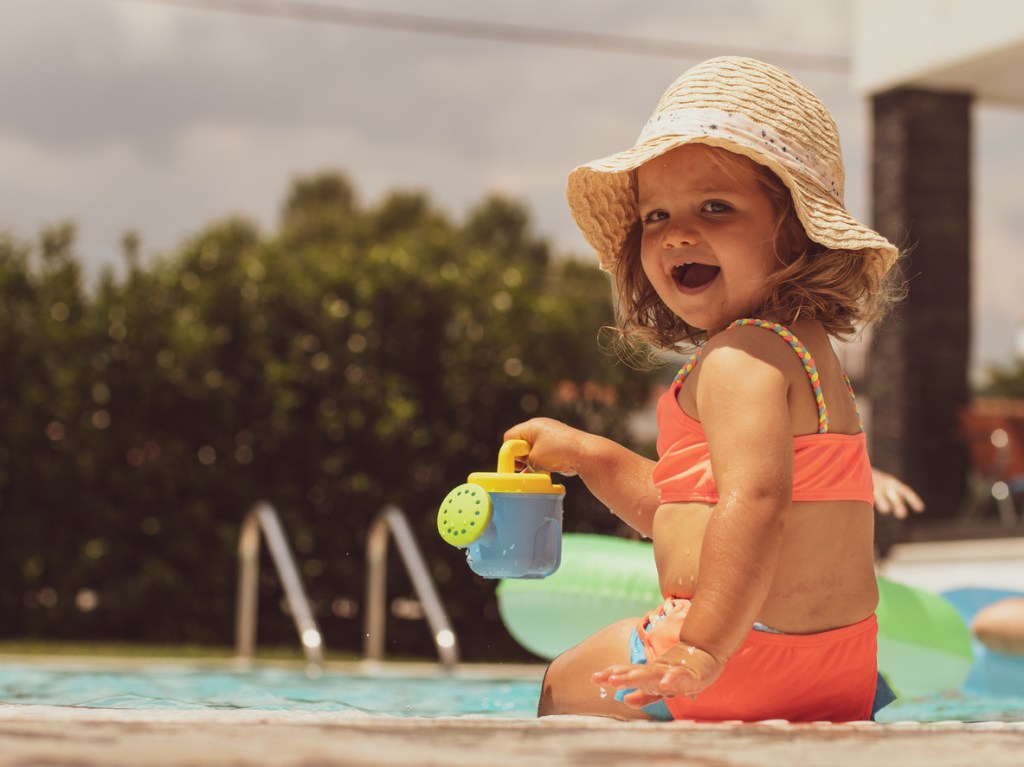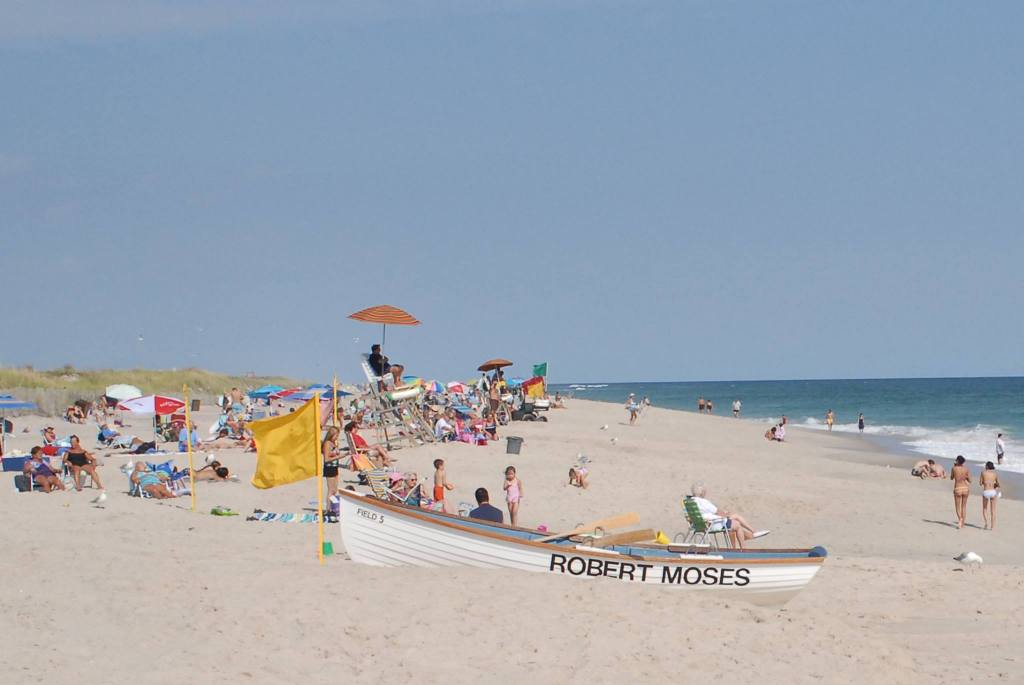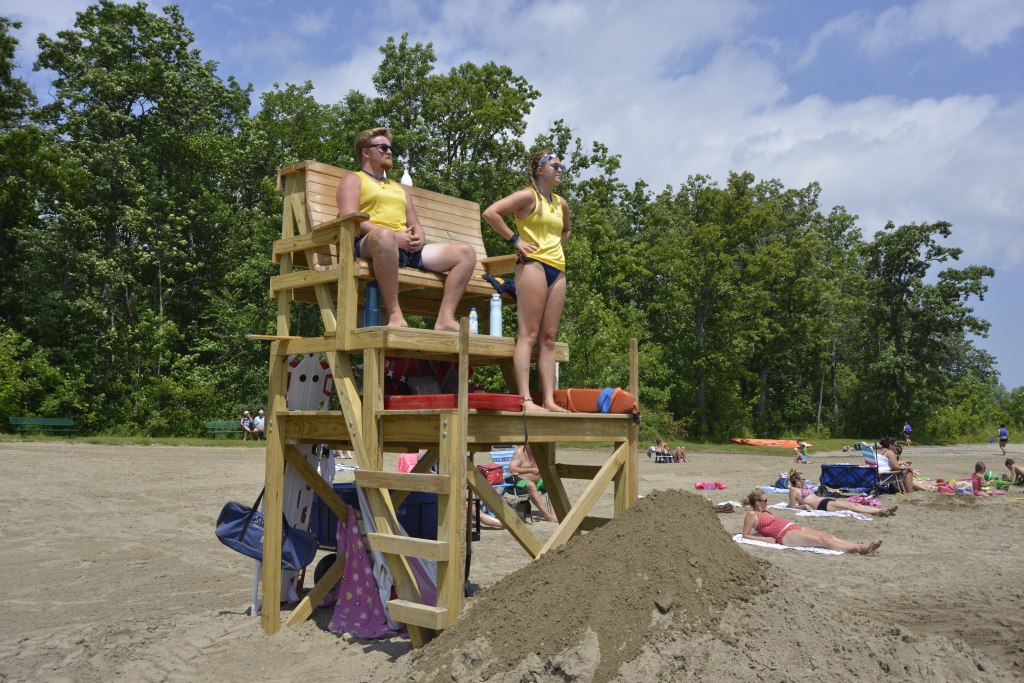The days are getting longer, and it won’t be long before the swim season is here! 2024 kicked off with the exciting announcement of NY SWIMS: the largest investment in public swimming in nearly a century.
This multifaceted program seeks to provide all New Yorkers with access to safe swimming opportunities, particularly in underserved and heat-prone communities. It calls for new or revitalized swim areas at Sojourner Truth, the East Bathhouse at Jones Beach, and Lake Sebago at Harriman State Park. It expands our existing learn-to-swim program, supports lifeguard recruitment and retention, provides transportation to people who can’t otherwise access swimming, and includes grant funding for communities to build or renovate swimming facilities.
The NY SWIMS program also has a serious goal: to reduce childhood drowning. On average, 11 people drown every day in the United States during the summer. Drowning is the leading cause of death among children aged one to four years old in the United States, and the second-leading cause of death for children aged 5 to 14. Children with autism are 160 percent more likely to die from drowning. Other medical conditions also increase drowning risk. As you begin to plan your summertime swimming adventures, here are some tips to keep it safe.
Be Proactive
- Choose bright colors for swimwear. Neon pink and neon orange offer the most visibility in light-bottomed pools. For lakes and dark-bottomed pools, neon green, neon orange and neon yellow are the most visible.
- Make sure children are familiar with the water. By age 1, children can begin water safety training to get them used to the water and to build a foundation for water skills.
- Start swim lessons at an appropriate age. By age 4, most children are ready for swimming lessons. Most communities offer free or low-cost swimming lessons. Now is the perfect time to start lessons for summer swim readiness.
- Where appropriate and permitted, use Coast Guard-approved personal flotation devices on children anytime they’re participating in open water recreational activities. Flotation devices must be appropriately sized and properly fastened to be effective.
- Lifeguards are there to help. If you’re swimming with children, explain to them that lifeguards keep people safe in the water. Explain the importance of listening to their instructions.
- Consider learning CPR. In an emergency, every second counts.
Be Attentive
- Never let children swim unattended. If you’re swimming with young children or weak swimmers, stay in the water with them and always offer “touch supervision.”
- If you’re swimming with older children, designate a “water watcher” to observe closely and constantly. This person shouldn’t be using a phone, reading, or doing anything but observing the water.
- Even if there’s a lifeguard on duty, remain vigilant. Lifeguards are responsible for all swimmers and are constantly scanning the water. Keeping close watch over the children in your group helps keep everyone safe.
- Be aware of depth changes where weaker swimmers may get into trouble. Small children may wander into deeper water following a sibling or friend.
- Talk to your child about the importance of staying out of the water unless an adult is there to supervise. Drowning happens even when children are not expected to be near water, such as when they gain unsupervised access to pools, or even get into retention ponds or culverts. If you have a pool at home, do not leave toys floating in the water or near the edge of the pool. Ensure the gates are always locked.
- Know the signs of trouble: While we think that swimmers in trouble will be waving their hands and making noise, this is not always the case. Watch out for people whose heads are low in the water (mouth submerged) or tilted back with mouth open, eyes closed or unable to focus, legs vertical in the water, or who are trying to swim but not making progress.
- Always swim sober, and always swim alert. Alcohol, marijuana, and even a simple lack of sleep can slow reaction times and cloud judgement. If you wouldn’t get behind the wheel, don’t get in the water. If you can’t stay alert, don’t supervise swimming children.
Be Aware Of The Conditions
- Ocean and lake swimming are very different from pool swimming. Be prepared for powerful waves, strong surf, slippery rocks, and sudden drop-offs.
- Rip currents usually form near a shallow point in the water, and can happen at any beach with breaking waves, including the beaches on the Great Lakes. If you are caught in a rip current, remain calm and don’t fight it. Swim parallel to the shore until you are out of the current, and float or tread water if you begin to tire. Learn more about rip currents.
- Use caution when you’re at the water’s edge. The water’s edge may seem safe, but danger lurks. Jagged, slippery rocks and murky waters can be hazardous. Consider using swim shoes to protect your feet.
- Shark activity on our Long Island beaches has increased in recent years. To avoid or manage an encounter, review our Shark Smart tips.
- Talk to a lifeguard when swimming in an unfamiliar natural body of water. Ask about potential hazards.
Be Aware Of the Rules
- Swim only in designated areas, and only when a lifeguard is on duty. Prohibited swim areas are often accompanied by dangers such as turbulent underwater currents, extreme cold, and widely varying depths. These hazards put even good swimmers at risk.
- Choose a swimming spot near a lifeguard for maximum visibility. Always follow their directions. Ensure that any children you are swimming with do the same.
- Watch for warning flags and understand what they mean. Green flags usually mark designated swimming areas – be sure to swim between the green flags. Yellow flags denote a surfing beach or an advisory. Red flags indicate a danger or hazard. Flag designations vary, so be sure to understand the color coding before you dive in.
- Follow all directions of a lifeguard and obey all posted signs. Talk to the children in your care about the importance of doing the same, and model good behavior for them.
Don’t stop here. These tips are just a starting place for water safety. If you are going to be swimming with children, continue to seek out trusted information on water safety in different situations. Many municipalities offer classes and information, as does the American Red Cross, YMCA, Center for Disease Control, and others.
-Written by Kate Jenkins, Public Affairs Digital Specialist and Rich Alden, Director of Water Safety





